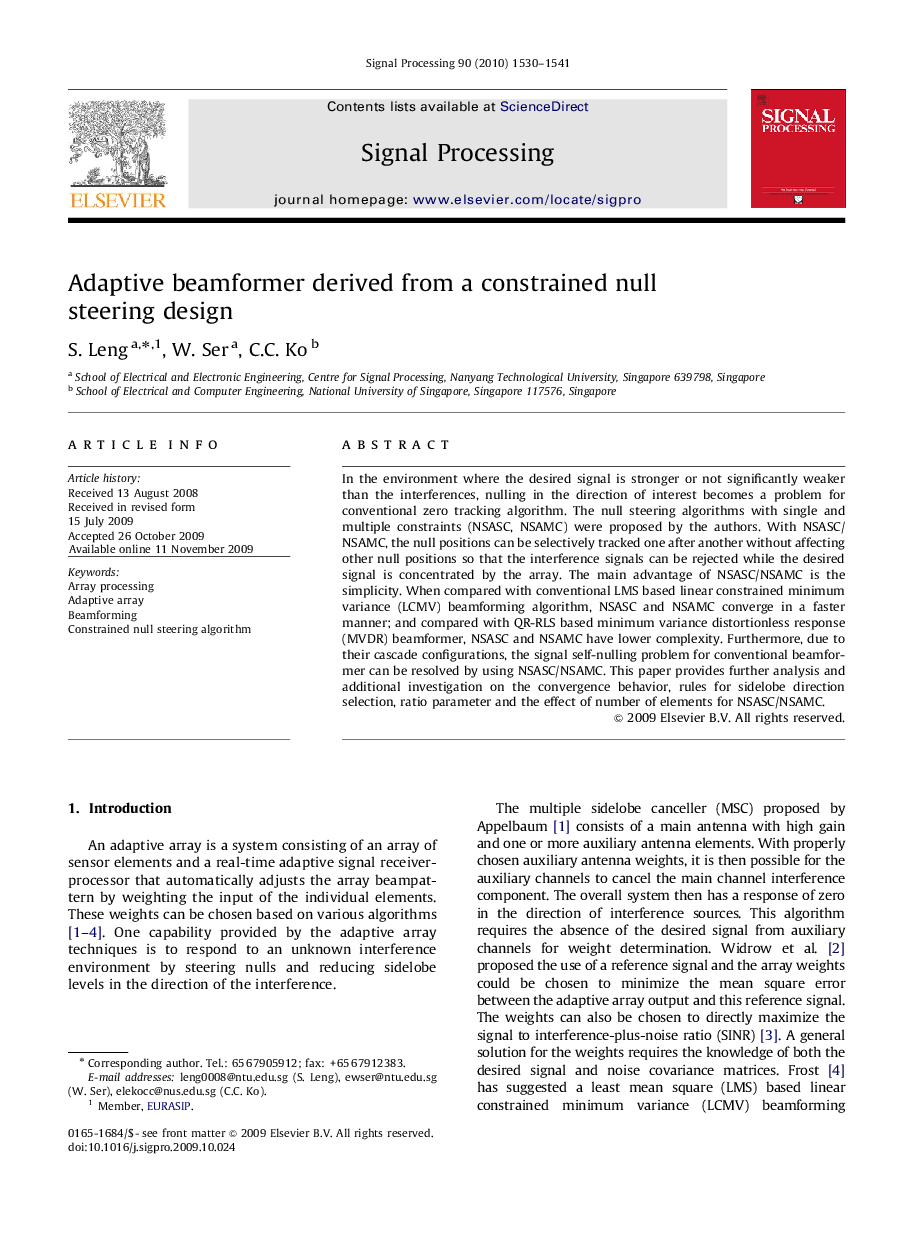| Article ID | Journal | Published Year | Pages | File Type |
|---|---|---|---|---|
| 564428 | Signal Processing | 2010 | 12 Pages |
In the environment where the desired signal is stronger or not significantly weaker than the interferences, nulling in the direction of interest becomes a problem for conventional zero tracking algorithm. The null steering algorithms with single and multiple constraints (NSASC, NSAMC) were proposed by the authors. With NSASC/NSAMC, the null positions can be selectively tracked one after another without affecting other null positions so that the interference signals can be rejected while the desired signal is concentrated by the array. The main advantage of NSASC/NSAMC is the simplicity. When compared with conventional LMS based linear constrained minimum variance (LCMV) beamforming algorithm, NSASC and NSAMC converge in a faster manner; and compared with QR-RLS based minimum variance distortionless response (MVDR) beamformer, NSASC and NSAMC have lower complexity. Furthermore, due to their cascade configurations, the signal self-nulling problem for conventional beamformer can be resolved by using NSASC/NSAMC. This paper provides further analysis and additional investigation on the convergence behavior, rules for sidelobe direction selection, ratio parameter and the effect of number of elements for NSASC/NSAMC.
